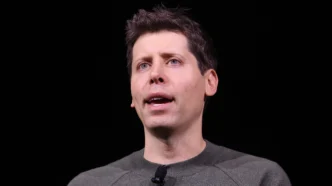OpenAI is getting ready to launch a new open-source language model—the first since GPT-2. The model is expected to drop this summer, and it’s already drawing buzz across the AI community. This time, OpenAI isn’t just opening up access. It’s aiming to lead the benchmark charts.
The model is being developed under the watch of Aidan Clark, VP of research at OpenAI. Sources say it will be a reasoning-focused model, much like the company’s o-series. And unlike some competitors, it’s being built to run on high-end consumer hardware, which could make it much more accessible to developers.
OpenAI is also planning to offer the model under a permissive license. That means few restrictions on how it can be used—commercially or otherwise. It’s a clear pivot away from the criticism that models like Meta’s Llama and Google’s Gemma have faced. Those tools were labeled “open,” but came with tight controls on usage.
With this new model, OpenAI wants to change the narrative. By allowing broad access and fewer limits, it’s hoping to attract developers who want freedom to build and experiment. Sources say OpenAI may even allow users to toggle reasoning features on or off. This would echo a trend set by competitors like Anthropic, which have added similar options to their models.
The stakes are high. Rival firms like DeepSeek have gained global traction by being fully transparent. Meta’s Llama family, for example, has surpassed a billion downloads. OpenAI’s move could help it reclaim ground it lost by staying closed for too long.
CEO Sam Altman has admitted the company got it wrong in the past. In a Reddit Q&A earlier this year, he said OpenAI needs a new approach to open source. He also noted that while they’ll keep building better models, they’re unlikely to stay as far ahead of others as before.
Safety will be a big focus for this release. Altman said the new model will go through rigorous testing, including internal reviews and red-teaming. OpenAI will also publish a model card, which includes technical benchmarks and safety scores. That level of detail hasn’t always been available with past models, and critics have called the company out for it.
To address those concerns, OpenAI plans to evaluate the model using its preparedness framework. Altman also said the team is doing extra work this time. Since the model can be modified after release, safety has to be built in from the start.
Still, skepticism remains. Some ethicists worry OpenAI is rushing the process. Others point to a lack of transparency around earlier releases. The internal drama last year—when Altman was briefly ousted—only added to those concerns.
This summer, the company will need to prove it has learned from past mistakes. If the model performs well and stays safe, it could become a major win for OpenAI—and a new standard for what “open” really means in AI.













